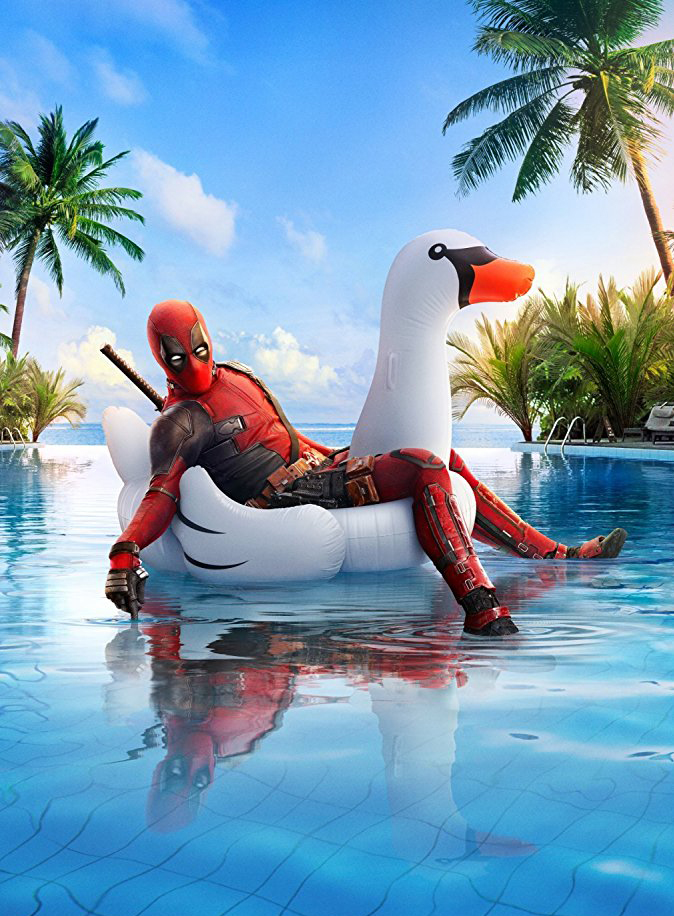
Last week, I was talking about the relentless use of in media res openings in films, and “Deadpool 2,” like “Adrift” and like its predecessor utilises the technique. Deadpool narrates the opening, promising that he dies at the end (tipping his hat to fellow X-Man Wolverine of last year’s “Logan”). When he dejectedly lies on a few barrels of test fuel and strikes a match, quipping, “Guess what, Wolvy? In this one, I’m dying too,” it’s up to us to decide how seriously to take this notably slippery and irreverent superhero. You can probably guess the answer if you’re familiar with 21st century superhero franchising, and “Deadpool” hopes that you are as its very mature comedy mines a kind of filmic intertextually that does not punish those who aren’t aware of the all the nuances of the joke but offers much for those who are. So, the first major joke post self-immolation is an extended credits sequence, set to an excellent Celine Dion song, and which impishly apes the opening credits of “Skyfall” and other James Bond films. It’s an early reminder for those who might have forgotten that even when the film falters, the antihero at the centre, and his creators, are significantly self-aware.
The original “Deadpool” had a straight forward narrative hook. Wade Wilson was a discharged vet whose (R-Rated) fairy-tale romance was foiled by a cancer diagnosis and then a misguided attempt to be immortal. There was one central villain, and the film’s resolution was the necessary end to that romance – tears, and a kiss. “Deadpool 2,” despite the importance of key plot points, is more schematic than you would expect. For me, that sort of unformed structure works for a film where the main character is equally unformed and opaque. Beyond his caustic sensibilities, neither Wade Wilson nor Deadpool (played by Ryan Reynolds) are marked by being clearly defined characters and so instead of opting for a traditional story arc, “Deadpool 2” opts to throw Wade through a series of events with varying personality types. It’s a risk, but it’s a risk that ends up working.
Deadpool’s own disregard for form is what necessitates his relationship with Russell, a pre-teen Firestarter mutant. The film does not oversell his initial appearance although it becomes part of the overarching main arc, so much so that a time-travelling assassin (in the form of Josh Brolin’s Cable) arrives to fix the future by destroying Russell in the present. The fact that Brolin’s Cable is not the villain you think on his first appearance is central to the way that “Deadpool 2” wins me over. Wade Wilson’s tonal erraticism would make the presence of a Big-Bad in the vein of traditional films more harmful than helpful. Instead of confronting us with a central cyborg villain, “Deadpool 2,” even when it gets emotional, benefits from the “let’s just roll with this” plot development that makes sense considering the man who is at the centre.
This, of course, means that a lot of the actual emotional moments threaten to lose some lustre in the face of not knowing when (or even if) to take anything on screen seriously. But, for me, it’s to the film’s benefit. The film’s post-credits sequences (essential in Marvel films) lean into the relentless irreverence in a way that, like comic books, emphasises and parades the unreality of it all. It’s a move that might not work for some, but made me more amused than anything else. All the jokes don’t work, but it ends up not mattering because of the relentless assault of it all. Director David Leitch makes the two hours feel shorter than movies with shorter run-times. In thinking back on the film, you realise there’s a lot more actual plot than you’d think, but Leitch is deft with the output. In a year of a lot of action sequences, “Deadpool 2” has at least two that stand out from the rest. And I say this because the action sequences advance both plot and tone in ways that benefit the film. Leitch knows the film he’s making, so the final showdown is not just good action but fun and funny.
I could do without the requisite “Deadpool 3” and “Deadpool 4” that are probably set to come after this instalment, but the easy madness of this instalment are charming enough to justify whatever comes after.
(Email your questions, or comments, to Andrew at almasydk@gmail.com.)
“Deadpool 2” is currently showing at Caribbean Cinemas and Princess Movie Theatres.

